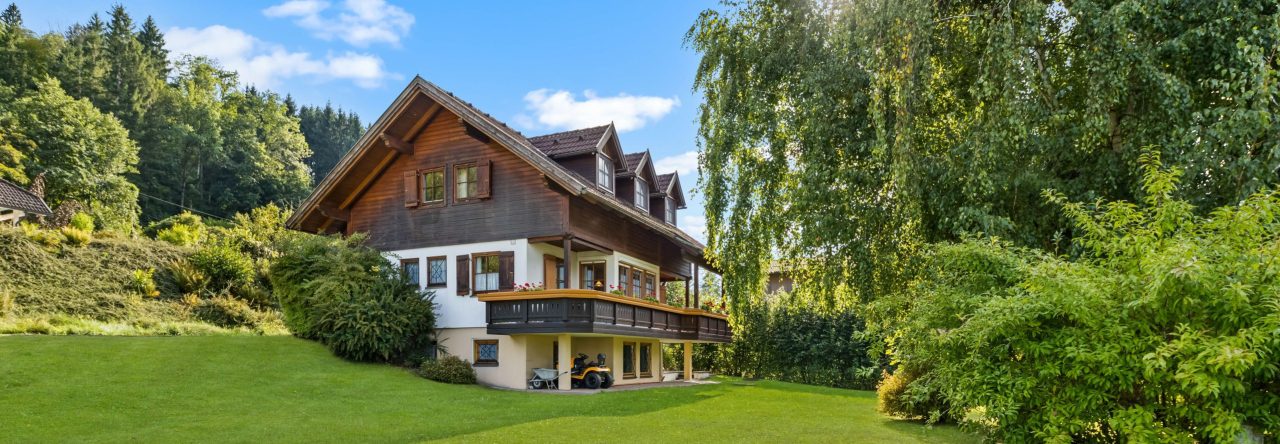
Short Facts:
Duration of the journey from Chalet Bjoerk:
about 45 minutes (around 45 km)
Recommended Equipment:
comfortable shoes

Location & History
Hochosterwitz Castle is one of Austria’s most impressive medieval castles. It is on a 172-metre high dolomite rock near Sankt Georgen am Längsee, east of the town of Sankt Veit an der Glan in Carinthia. The rock castle is one of the state’s landmarks and a major tourist attraction. You can see it from a distance of up to 30 km on a clear day.
The Beginnings
Louis the German first mentioned the rock in 860 in a deed donating several of his properties to Salzburg’s Archdiocese. The stronghold got the name ‘Astarwiza’, its name being of Slavic origin. It remained a Salzburg possession until the 11th century.
In his book Change, the Austro-American psychologist Paul Watzlawick (1921–2007) renders a popular tale of the castle’s siege by Countess Margaret of Tyrol (Margarethe Maultasch). According to legend first noted by the medieval chronicler Jakob Unrest and later by Jacob Grimm, Margaret, invaded the duchy. However, her forces were deceived and withdrawn when the garrison of Hochosterwitz slaughtered its last ox, filled it with corn, and threw it over the wall, pretending it still had so many provisions in stock that they could be used as projectiles. The tale is a common topic in the Eastern Alpine region, and it is known in many variations, with different characters.
In the 15th century, the Turks captured the last Carinthian cup-bearer, Georg of Osterwitz, who died in 1476 in prison without leaving descendants. Hans of Osterwitz was the last remaining survivor of the family. He had a substantial debt owing to the Emperor and gave up the castle’s deeds to pay his debts. After four centuries, on 30 May 1478, the castle’s possession reverted to the Habsburg emperor Frederick III.
Khevenhüller Family Owns the Castle since the 16th Century
Numerous Turkish campaigns damaged the castle badly over the next 30 years. On 5 October 1509, Emperor Maximilian I handed the castle a pledge to Matthäus Lang von Wellenburg, then Bishop of Gurk. Bishop Lang undertook a substantial renovation project for the damaged castle. About 1541, German king Ferdinand I of Habsburg bestowed Hochosterwitz upon the Carinthian governor Christof Khevenhüller. In 1571, Baron George Khevenhüller acquired the citadel by purchase. He fortified it to deal with the threat of Turkish invasions of the region, building an armoury and 14 gates between 1570 and 1586. Such massive fortification is considered unique in citadel construction. Because of the 14 gates, each equipped with different treacherous methods of guarding the path, local legend maintains that the castle has never been conquered and that none of the attacks managed to get beyond the fourth (Engelstor) gate.
Since the 16th century, Hochosterwitz remained basically unchanged. It has also remained in possession of the Khevenhüller family as requested by the original builder, George Khevenhüller. A marble plaque dating from 1576 in the castle yard documents this request.
Tourists can walk the 620-metre long pathway through the 14 gates up to the castle; each gate has a diagram of the defence mechanism used to seal that particular gate. The castle rooms hold a collection of prehistoric artefacts, paintings, weapons, and armour, including one armour 2.4 metres tall, once worn by Burghauptmann Schenk.
General Info
You can check admission prices from this page.
8 people can reach the stronghold via a riser height of 105 meters and a journey time of 95 seconds. Thus, the visit of the castle Hochosterwitz for older and disabled people made this possible. Approximately 1 million people have utilized the line since its commissioning.














































































